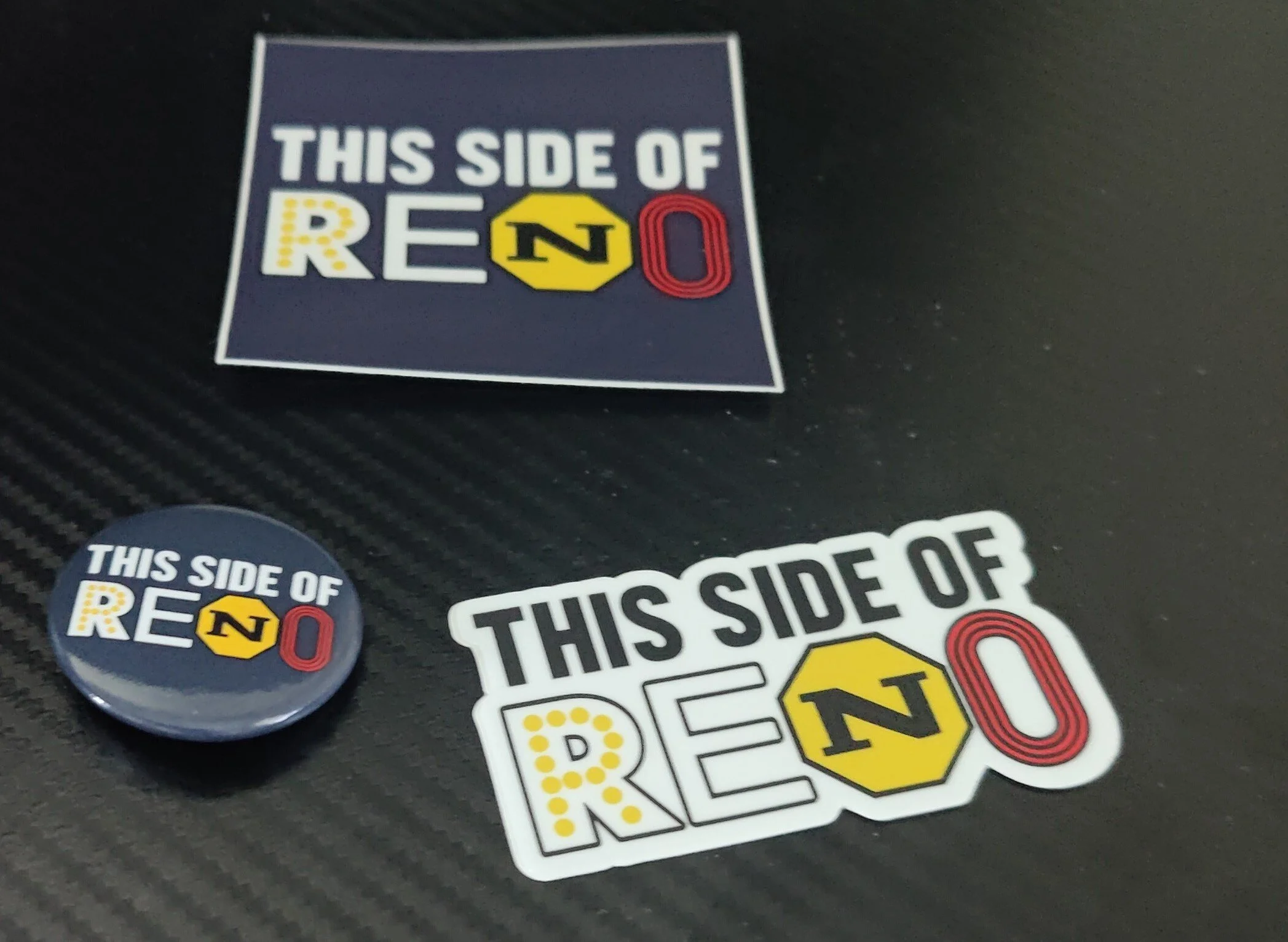The weather in Reno has always been confusing. I’ve lived here for my whole life, but I’ve never found any consistency in the seasons. Winters without a single snow cloud and summers filled with flash floods are more like a coin flip rather than a surprise. On the August day I was out to meet with This Side of Reno, an upcoming mini-series documentary project on the city’s history, gray clouds blanketed the sky, and a barely noticeable drizzle would gently fall every so often.
This Side of Reno is trying to preserve Reno’s history, through short spotlights of various buildings and other spots of local historical significance.
The plan is to release a series of short videos, approximately ten minutes in length. The first episode, for instance, will focus on the Reno Arch on North Virginia and Commercial. It’s a three-person project between Hagen Sandoval, a 6th generation Nevadan, with experience in journalism and car sales, local historical preservationist Brett Banks and filmmaker Hunter Rand. The team combines skills in scholarship on Reno history and video production, with Banks and Sandoval both having the title of Executive Producer and Host, while Hunter Rand is listed as the Producer and Director of Photography.
On that cloudy day, I was on my way to meet with Sandoval and Banks. I slightly sped up my pace walking down North Virginia Street as I idly checked my phone and realized I was moving too slowly to make it on time. The road is closed off to car traffic right now thanks to the micromobility pilot project, but Downtown Reno felt the same to me as it always had: a hectic mix of tourists and Reno residents walking between the tall casinos, long alleys and small corner stores.
The cars were gone, but the people were still the same. Not that I was complaining, since the open streets helped me make it just on time to our meeting at Believe Plaza. I looked around as a few other groups loitered around, smoking and chatting as I waited for Banks and Sandoval to arrive. I wouldn’t be there long, probably less than a minute before I saw Sandoval on the other end of the plaza. Once he got a little closer, he introduced himself and handed me a small ziplock bag of stickers and pins with the This Side of Reno logo directly on the center of each.
As we picked a spot to sit, Banks arrived at the same time. A few skateboarders fifty feet or so in front of us rolled back and forth across the mostly open ground. They seemed to be actively looking for small pieces of trash and other obstructions to do tricks over with varying degrees of success. The talented ones occasionally looked around, hopefully expecting someone to watch them. Those who needed a little more practice looked around more sheepishly, seemingly praying for the opposite.
This is a scene that has been played out many times for anyone who’s been to Downtown Reno, but the irony of meeting at the Believe Plaza to talk history was not lost on me. Sandoval told me during our conversation that we stood right on top of the Mapes Hotel that was knocked down a little over twenty years ago. The Mapes Hotel was the main star of Sandoval’s previous aspiration, trying to document and compile as much information about the building as he could. He runs an active Instagram page about the building, gaining over 800 followers by posting historic photos of the Mapes Hotel. Looking at the plaza now, it’s almost hard to believe that the hotel, the tallest building in the entire state when it was first built over 70 years ago, ever existed in the first place.
Sandoval has had six generations of family in Nevada before him, and Banks has had seven. This created a deep connection to the Silver State, and each says they’re one of the only people they know in their twenties to spend time actively seeking out local history.
“Hagan and I just want our voices out there too, because we are realistically gonna be doing this long term,” Banks said. ”We've put ourselves into a lifetime commitment with the city of Reno and its history.”
History isn’t just a passion project for them; it’s a hobby, too. For fun, they look through listings for interesting photo albums and other undiscovered treasure troves containing tidbits of the Biggest Little City’s past on eBay. If a listing is particularly intriguing, they’ll call each other to coordinate who’s going to be the one to buy it. After explaining that they collect these photos and historical records, some people will part with their photos for free. But one of Sandoval’s biggest recent finds was a cornerstone of the Mapes Hotel.
“I'm getting yelled at at home,” Sandoval said. “You spent how much on a piece of concrete from a building that no longer stands? Why does that even matter? But to me, this is so important. I pulled this off the side of the road in Sun Valley, because some guy was trying to move it. He had no idea what it was. This is a part of the Mapes. Why is there not more of this? Why do people not know what that is?”
Banks has similar stories about discovering local history. After her grandmother passed away, she inherited hundreds of photos sharing a common thread: a service station over eight hours away by driving in Welcome, Nevada. She started researching, deciding to make the long drive and brought a tent to camp in. After tracking down this service station and talking with the owners, they decided to turn the building into a museum.
“If I hadn't found those photos and spent the time researching them, that would've been a lost story to my whole family,” Banks said. “Now I have cousins calling me that I've never met in my life, because my phone number's in the museum.”
Sandoval said the first episode on the Reno Arch is planned to be released by the end of the year at the very latest and joked that he will jump in the river if it isn’t out by the end of September. The long-term plans for This Side of Reno include influencing public policy. Banks and Sandoval want more protections for buildings that are classified as historic structures and for the City to implement adaptive reuse of historical structures whenever possible. This is the process of refurbishing or repurposing an older building to have a new purpose in a modern environment.
“Our goal would be for the City to give more avenues to its Historical Resources Commission to protect our structures when something is recognized as historic and important,” Sandoval said. “We need to stop selling out our history for the promise that the future's gonna be brighter. Because if the past is all gone, what do we have?”


